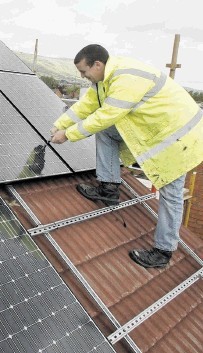
Against an increasingly rough and tumble competitive landscape, total investment in renewables excluding large hydro last year increased 17% to a record $257billion, a six-fold increase on the 2004 figure and 94% higher than the total in 2007, the year before the world financial crisis, according to United Nations research.
Although last year’s 17% increase was smaller than the 37% rise recorded in 2010, UNEP (United Nations Environmental Programme) reports that it was achieved against the backdrop of a widening sovereign debt crisis in Europe and during a period of rapidly-falling prices for renewable power equipment.
In more and more countries, renewable energy has outgrown its “niche player” status and now represents a significant and rapidly growing share of total energy supply.
It is noted that, last year, renewables continued to grow strongly in all end-use sectors – power, heating and cooling and transport.
Indeed, renewable sources have grown to supply 16.7% of global final energy consumption.
Of that, traditional biomass’s share has declined slightly, while modern renewable energy’s share has risen.
The UN research points out that, last year, renewable energy technologies continued to expand into new markets: around 50 countries installed wind power capacity, and solar PV capacity was moving rapidly into new regions and countries.
Solar hot water collectors are used by more than 200million households as well as in many public and commercial buildings all around the world.
In the power sector, renewables accounted for almost half of the estimated 208 gigawatts (GW) of electric capacity added globally during the year.
By the end of 2011, total renewable power capacity worldwide exceeded 1,360GW, up 8% over 2010; renewables comprised more than 25% of total global power-generating capacity (estimated at 5,360GW in 2011) and supplied an estimated 20.3% of global electricity.
Some costs fell. In particular, photovoltaic module prices dropped by close to 50%, and onshore wind turbine prices by around 10%.
“These changes brought these two leading renewable power technologies closer to competitiveness with fossil-fuel alternatives such as coal and gas,” says the UN’s REN21 report.
“Solar generation surged past wind power to become the renewable energy technology of choice for global investors in 2011. Solar attracted nearly twice as much investment as wind, driving the renewables sector to yet another record-breaking year, albeit one beset with challenges for the renewables industry.”
China remained the leader, with $52billion of renewables investment, excluding large hydro, closely followed by the US with $51billion.
However, Europe remains the biggest region for dollars invested, swallowing $101billion over the year.
In the EU per se, renewables accounted for more than 71% of total electric capacity additions last year, with solar PV alone representing nearly half (46.7%) of new capacity that came into operation.
Germany stood out as remaining the third-biggest market for renewable energy investment. Renewable sources met 12.2% of total final energy consumption and accounted for 20% of electricity consumption (up from 17.2% in 2010 and 16.4% in 2009).
Among other major developing economies aside from China, the star performer was India, where the country’s National Solar Mission helped to spur an impressive 62% increase in renewable energy investment to $12billion, the fastest investment expansion of any large renewables market in the world.
In Brazil, there was an 8% increase to $7billion.
According to the UN too, at least 118 countries, more than half of which are developing countries, had renewable energy targets in place by early 2012, up from 96 one year before, although some slackening of policy support was seen in developed countries.
This weakening reflected austerity pressures, particularly in Europe, and legislative deadlock in the US Congress. Support for renewable power generation remains the most popular policy option with at least 65 countries and 27 states now having feed-in-tariffs (FITs).
Recommended for you
